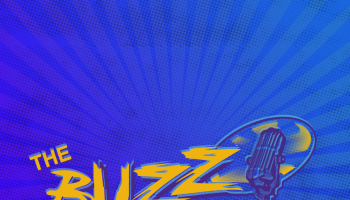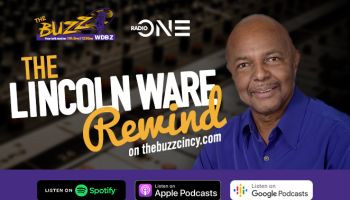Like the rest of America, I found myself getting sick after reading about the sex abuse scandal at Penn State University. The detailed reports are nothing less than mortifying, and I am among those who believe that this university should pay tens of millions to the victims and their families in order to make things right. I also find myself wondering if anyone other than former Penn State Assistant Coach Jerry Sandusky should be going to jail over this – there appear to be numerous accomplices who should be losing more than just their jobs.
But a radio conversation I had this afternoon with Santita Jackson (the daughter of Rev. Jesse Jackson) led me to reflect on the buzz that this case has suddenly created within the African American community. Black folks are increasingly concerned about the fact that many of the victims were Black boys, and wondering if race created an additional layer of vulnerability. In light of this, I thought about a few things that I’m asking myself about this pathetic and tragic situation.
1) How many of those boys were Black?
Many of my associates noticed that media reports of the Penn State/Sandusky sex scandal featured a great deal of code language: At-risk youth, under-privileged kids, etc. In many circles, and in a country that enjoys hiding from racial realities, these words effectively mean “Black boys.” This is supplemented by the fact that many programs to “help” Black youth are also feeder programs for universities seeking to extract wealth from the extraordinary abilities of the Black male athlete. Based on my (as my friend calls it) “negro intuition,” I’m willing to bet that more than a few of these boys were Black.
The fact that the children might have been Black boys doesn’t make the scandal any worse than it already is. But it does create a heightened reaction from a community that is sick of seeing Black men victimized in far too many walks of life. It also leads some to wonder if race played a role in Sandusky’s fetishes, or the tone of the university’s response.
2) How did NCAA economic power play a role in the cover-up?
It’s a common fact that the NCAA earns hundreds of millions of dollars each year on the backs of unpaid athletes. Many of these athletes come from underprivileged communities, and already find themselves dominated by the massive financial power of this professional sports league. Yes, I said “professional:” everyone in this league makes professional money except for the individuals who actually do the work. We can’t let a mere technicality keep us from calling out the system for what it is.
Former Penn State coach Joe Paterno and other administrators likely swept Sandusky’s activities under the rug because they were trying to protect their massive cash cow. In that regard, the university came to the concerted conclusion that protecting the reputation of the Penn State University football program was more important than protecting the innocence of young children. Only a keen addiction to the power of money can make a group of educated men and women do such an evil thing.
If the Penn State program were truly amateur (as the NCAA would like for us to believe), there would not be millions of dollars on the line and the Penn State football program would not have an economic value that matches many professional sports organizations. This would have made a difference in the degree to which administrators felt pressured to make unethical decisions to protect a billion dollar brand. In other words, the Penn State University sex scandal was yet another example of just how far NCAA members are willing to go in order to protect their wealth.
The Penn State/Sandusky child sex scandal is simply among the worst and latest of a slew of ethical compromises regularly made by universities that earn millions from collegiate athletics. Over the last 20 years, I’ve seen students taken out of classes for big games, having their majors changed to fit their football schedules, and even leaving college without ever learning how to read with administrators hiding the fact that the star on the team barely knows his A-B-Cs. The pattern is reprehensible, and reminds us of how NCAA athletic money has served to corrupt numerous institutions, turning them into a glaring hypocritical embodiment of capitalism gone wild.
3) Did race play a role in the way Penn State responded to the abuse?
One can only hope that race wasn’t a factor in the decision of leading Penn State officials to overlook a serial child predator in their ranks. But African Americans have good reason to be concerned and skeptical. When Black kids go missing, the media almost never notices. When Black children are being shot in “the hood,” nobody cares. Black men are incarcerated at holocaust proportions, but few politicians show even a hint of concern. In light of these realities, it’s not entirely inconceivable that Sandusky chose his targets for the same reason that many serial killers murder prostitutes with no family — it’s easy to get away with the unthinkable when you go after the victim that no one cares about.
This leads me to my final question.
4) What if Jerry Sandusky was a Black man having sex with white boys?
While I hold that we don’t know the race of all the abused children, I truly believe that many of these young men were Black. While the race of the victim has no impact on the severity or relevance of the crime, it has been proven in numerous academic studies that race does impact the magnitude of the punishment. For example, had OJ Simpson not killed a white woman, his case would have been in the media for about a week.
The NCAA has ruined the careers of numerous Black male athletes over even the tiniest of infractions: Getting free tattoos, taking a few hundred dollars from a booster, or asking to be compensated in a manner that is remotely consistent with their massive market value. You would expect that an institution (the NCAA) that has the ability to catch an athlete taking free lunch would also be able to identify a man who has been sexually abusing children in campus facilities for decades. The truth, however, is that we tend to only find the things that we’re actually looking for, and I suspect that the desire to protect young men and women hardly inspires as much passion as the NCAA’s desire to protect its money – for example, the NCAA has no problem seeing the star player’s mother being evicted rather than share its money with the players and their families.
I can’t help but wonder if the Penn State scandal would have been swept under the rug had a Black coach (or athlete) been found abusing a young white kid in the showers in the same manner as Jerry Sandusky. Would the free passes Sandusky has received from the judge (who volunteered with his charity), prosecutors and the university have come to pass if the situation had been shaped differently? While we might presume that any Penn State coach would have been protected in the same way, it’s not difficult to speculate that race might be a factor in a case such as this.
Only time will tell how Penn State University overcomes one of the most tragic scandals in the history of college sports. But I hold to the premise that these kids were sold out for money, and it is for this reason that we should all be ashamed. If Penn State were truly an amateur athletic organization, such a terrible cover-up would never have happened.
Dr. Boyce Watkins is a Syracuse Professor and founder of ALARM, the Athlete Liberation Academic Reform Movement. To have Dr. Boyce commentary delivered to your email, please click here.














